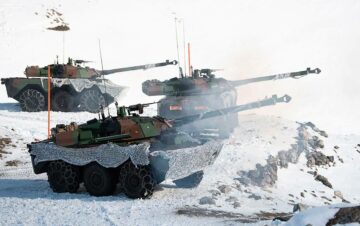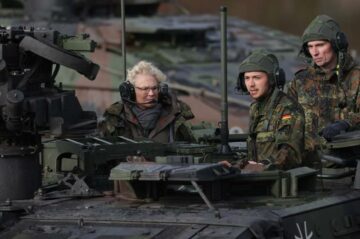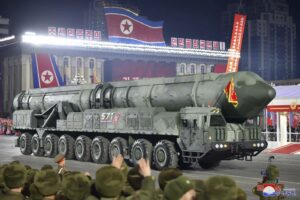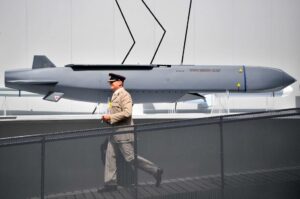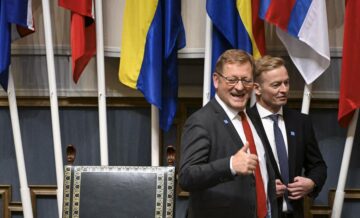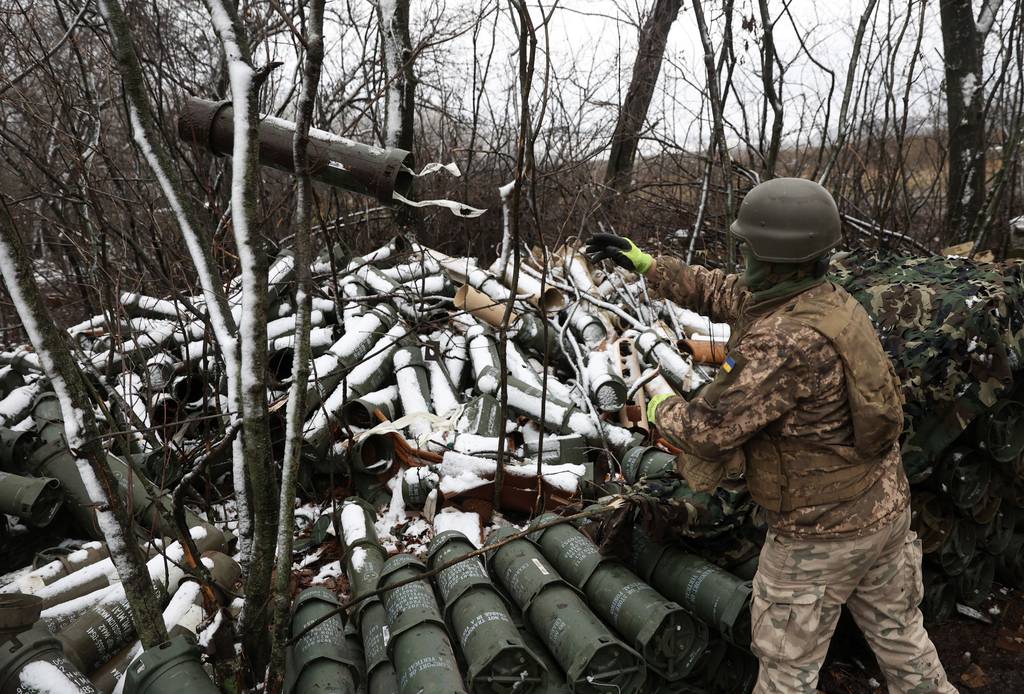
ROME — Several European nations will fail to meet a commitment to send Ukraine 1 million rounds of ammunition by next spring because manufacturers are prioritizing the export market rather than ramping up production, officials have said.
Local defense ministers and European Union officials admitted the bloc would not be able to honor its promise to Ukraine, made this spring, as they arrived for a summit in Brussels on Tuesday.
“The 1 million will not be reached — you have to assume that,” German Defence Minister Boris Pistorius told reporters, adding he had never personally offered guarantees and was told early on the EU would struggle to make the deadline.
“These warning voices have now been proven right, unfortunately,” he said.
The EU earmarked €1 billion (U.S. $1.1 billion) earlier this year to compensate members for the shells they donated to Ukraine from their stocks, plus another €1 billion to fund the joint purchase of more munitions from EU states and Norway.
A third initiative envisaged EU funding for factories and the acceleration of permits for new facilities to speed up production.
The goal was to deliver 1 million shells in 12 months.
After the meeting on Tuesday, EU foreign policy chief Josep Borrell shared Pistorius’ view. “So maybe by March we will not have the 1 million shots,” he said.
Estonian Defence Minister Hanno Pevkur said the failure would give Russia an edge in Ukraine.
“Look at Russia: They are producing today more than ever. They are getting shells from North Korea. Europe cannot say that Russia and North Korea can deliver and we cannot,” he said.
Defense News contacted the Aerospace, Security and Defence Industries Association of Europe, a trade group representing sectors across the continent, but it did not comment by press time.
The slowdown in the delivery of much-needed 155mm shells comes as Ukraine’s counteroffensive against Russia’s full-scale invasion that started in February 2022 grinds to a halt. Furthermore, some U.S. lawmakers have cast doubt over whether the U.S. will continue to arm Ukraine at the same significant level.
Borrell’s plan to create a four-year, €20 billion fund for Ukrainian military assistance may also get watered down, according to Jean-Pierre Maulny, the deputy director of the French Institute for International and Strategic Affairs think tank and consultancy.
Borrell said the EU has sourced 300,000 shells from members’ own stockpiles, but manufacturers have complicated the process of obtaining newly produced munitions because they are continuing to focus on export markets.
“About 40% of the production is being exported to third countries,” he said. “So maybe what we have to do is to try to shift this production to the priority one, which is the Ukrainians.”
Dutch Defence Minister Kajsa Ollongren said Europe’s industry must ramp up production.
“We have all signed contracts. We’ve done joint procurement. So industry now has to deliver. It has to step up its game to produce more,” Ollongren said.
EU internal market commissioner Thierry Breton noted the industrial base has the resources to ramp up production for Ukraine.
Indeed, Estonia’s defense minister said the country on Nov. 10 opened a fast-track procurement process for 155mm ammunition rounds worth €280 million.
“Over the next four years, nearly 30% of our defense budget will go towards ammunition. This is a clear signal for the defense industry: Go ahead and shift production into next gear,” Pevkur said.
And if EU industry is unable to boost production, member states should import more ammunition, he added. “Ukraine does not have time to wait.”
Tom Kington is the Italy correspondent for Defense News.
- SEO Powered Content & PR Distribution. Get Amplified Today.
- PlatoData.Network Vertical Generative Ai. Empower Yourself. Access Here.
- PlatoAiStream. Web3 Intelligence. Knowledge Amplified. Access Here.
- PlatoESG. Carbon, CleanTech, Energy, Environment, Solar, Waste Management. Access Here.
- PlatoHealth. Biotech and Clinical Trials Intelligence. Access Here.
- Source: https://www.defensenews.com/global/europe/2023/11/15/euro-leaders-blame-industry-for-failure-to-meet-ukraine-ammo-promise/
- :has
- :is
- :not
- $UP
- 000
- 1
- 10
- 12
- 12 months
- 2022
- 300
- 70
- a
- Able
- acceleration
- According
- across
- added
- adding
- admitted
- Aerospace
- Affairs
- against
- ahead
- All
- also
- ammunition
- an
- and
- Another
- ARE
- ARM
- arrived
- AS
- Assistance
- Association
- assume
- At
- base
- BE
- because
- been
- being
- Billion
- bloc
- boost
- boris
- Brussels
- budget
- but
- by
- CAN
- cannot
- chief
- clear
- comes
- comment
- commissioner
- commitment
- complicated
- consultancy
- continent
- continue
- continuing
- contracts
- countries
- country
- create
- deadline
- defence
- Defense
- deliver
- delivery
- deputy
- DID
- Director
- do
- does
- done
- doubt
- down
- Earlier
- Early
- Edge
- EU
- Euro
- Europe
- European
- european union
- Europes
- EVER
- export
- facilities
- factories
- FAIL
- Failure
- February
- Focus
- For
- foreign
- foreign policy
- four
- French
- from
- full-scale
- fund
- funding
- Furthermore
- game
- Gear
- German
- get
- getting
- Give
- Go
- goal
- Group
- guarantees
- had
- Have
- he
- HTTPS
- if
- images
- in
- industrial
- industries
- industry
- Initiative
- Institute
- internal
- International
- into
- IT
- Italy
- ITS
- joint
- jpg
- korea
- lawmakers
- leaders
- Level
- made
- make
- Manufacturers
- March
- Market
- Markets
- May..
- maybe
- Meet
- meeting
- member
- Members
- Military
- million
- minister
- ministers
- months
- more
- much-needed
- must
- Nations
- nearly
- never
- New
- newly
- news
- next
- North
- North Korea
- Norway
- noted
- nov
- now
- obtaining
- of
- offered
- officials
- on
- ONE
- opened
- our
- over
- own
- permits
- Personally
- plan
- plato
- Plato Data Intelligence
- PlatoData
- plus
- policy
- press
- prioritizing
- priority
- process
- procurement
- procurement process
- produce
- Produced
- producing
- Production
- promise
- proven
- purchase
- Ramp
- ramping
- rather
- reached
- representing
- Resources
- right
- rounds
- Russia
- s
- Said
- same
- say
- Sectors
- security
- send
- several
- shared
- shift
- shots
- should
- Signal
- signed
- significant
- Slowdown
- So
- some
- sourced
- speed
- spring
- started
- States
- Step
- Stocks
- Strategic
- Struggle
- Summit
- tank
- than
- that
- The
- the joint
- their
- they
- thierry breton
- think
- think tank
- Third
- third countries
- this
- this year
- time
- to
- today
- told
- towards
- trade
- try
- Tuesday
- u.s.
- Ukraine
- Ukraines
- Ukrainian
- Ukrainians
- unable
- unfortunately
- union
- View
- VOICES
- wait
- warning
- was
- we
- What
- whether
- which
- will
- worth
- would
- would give
- year
- years
- you
- zephyrnet



